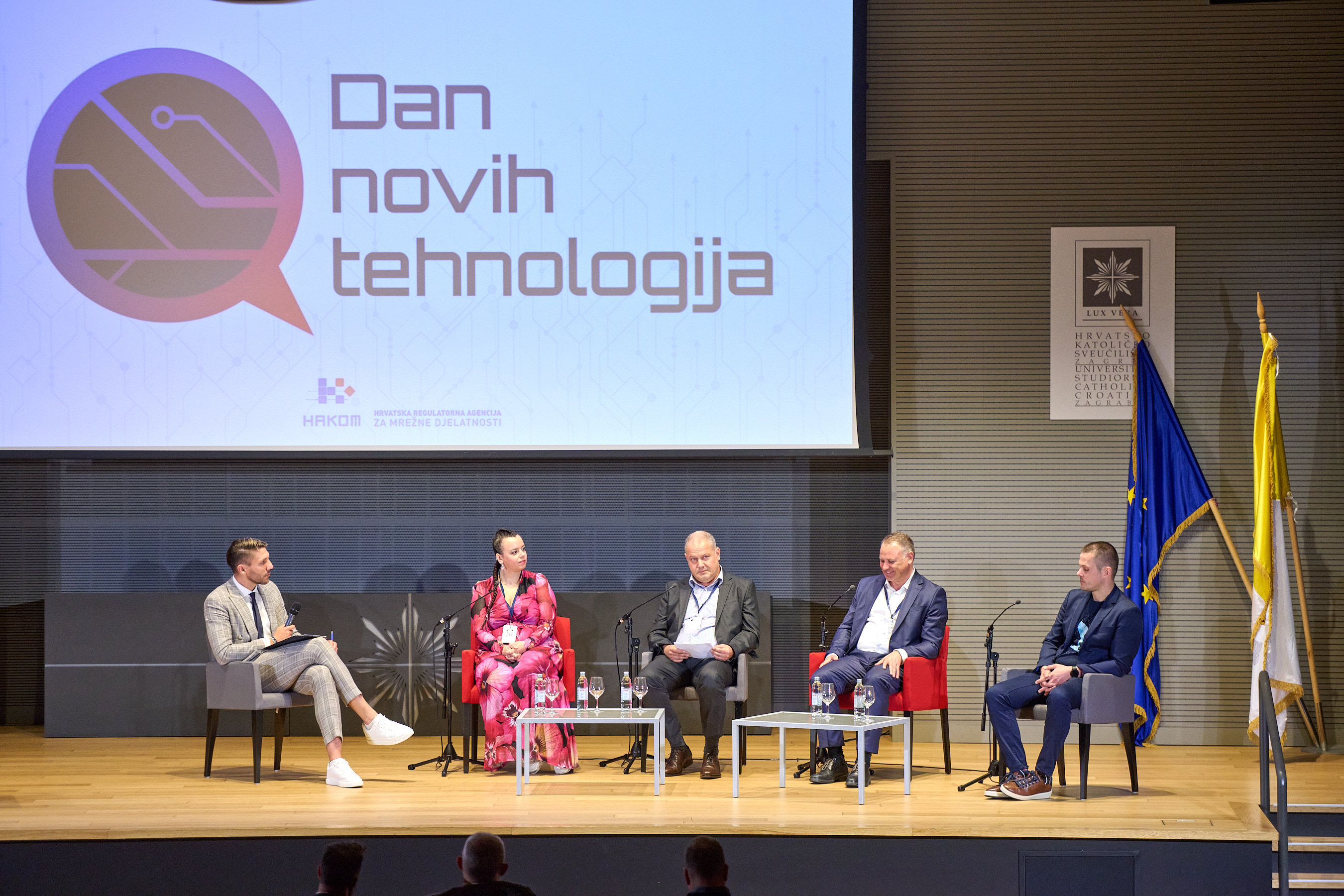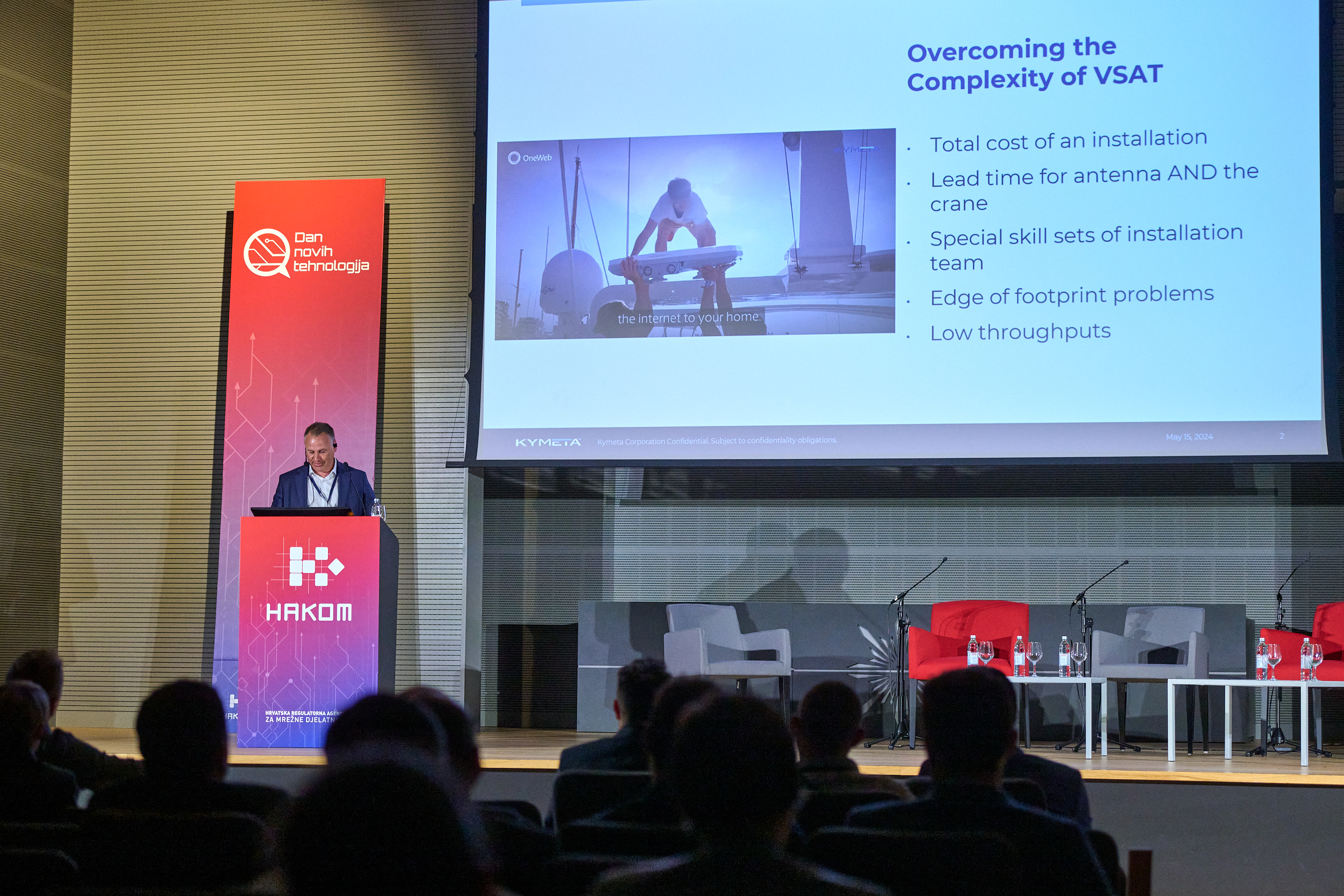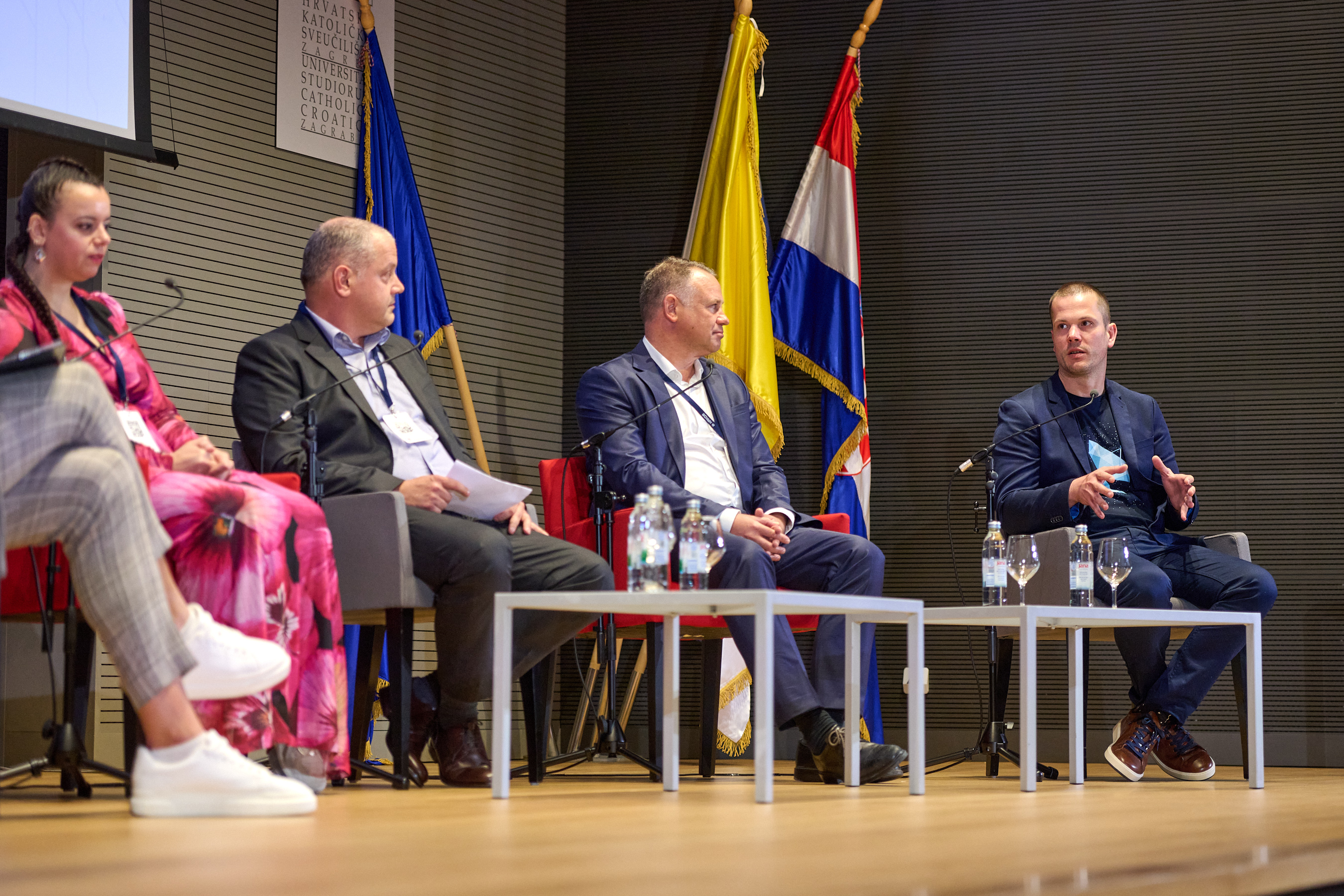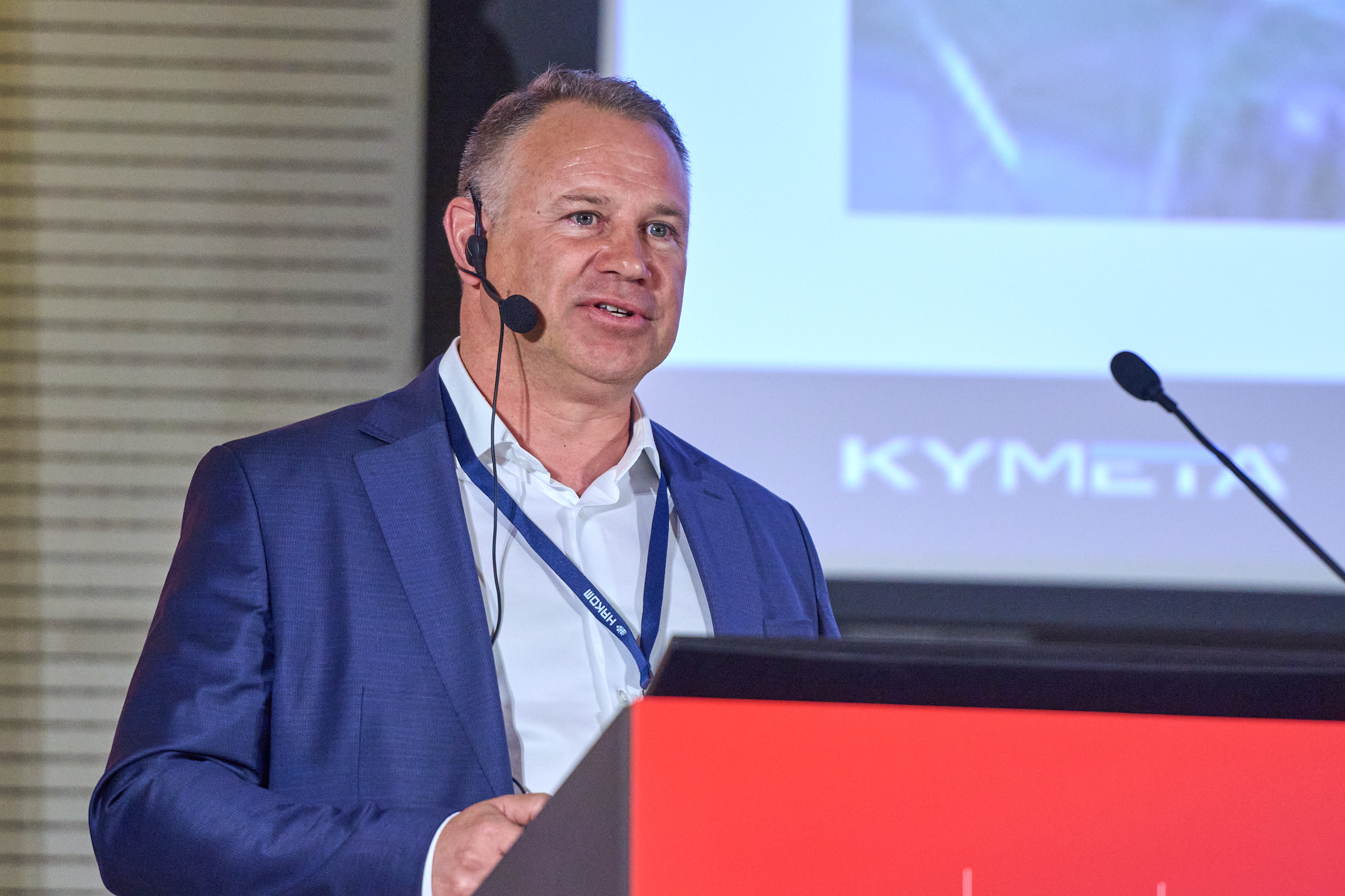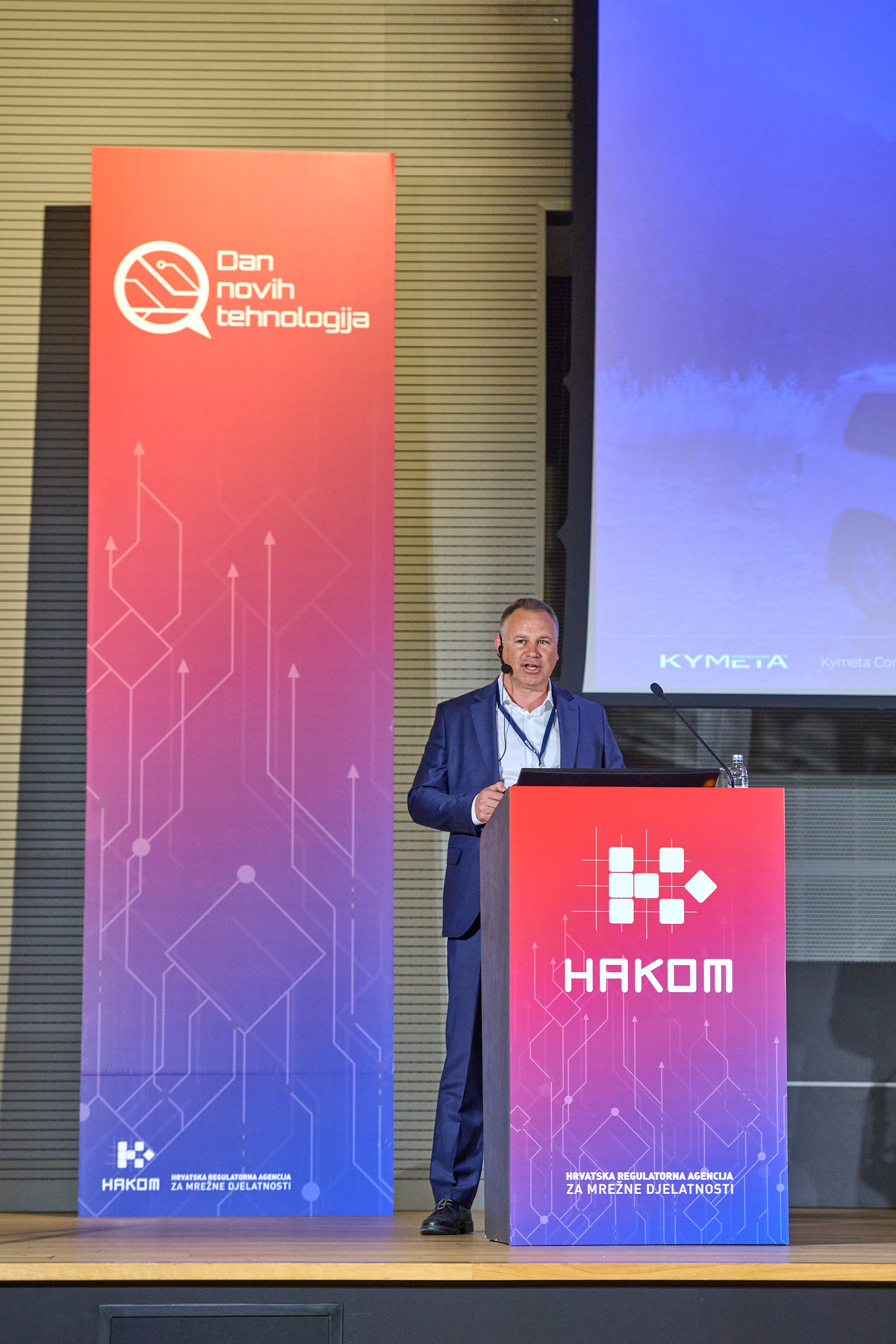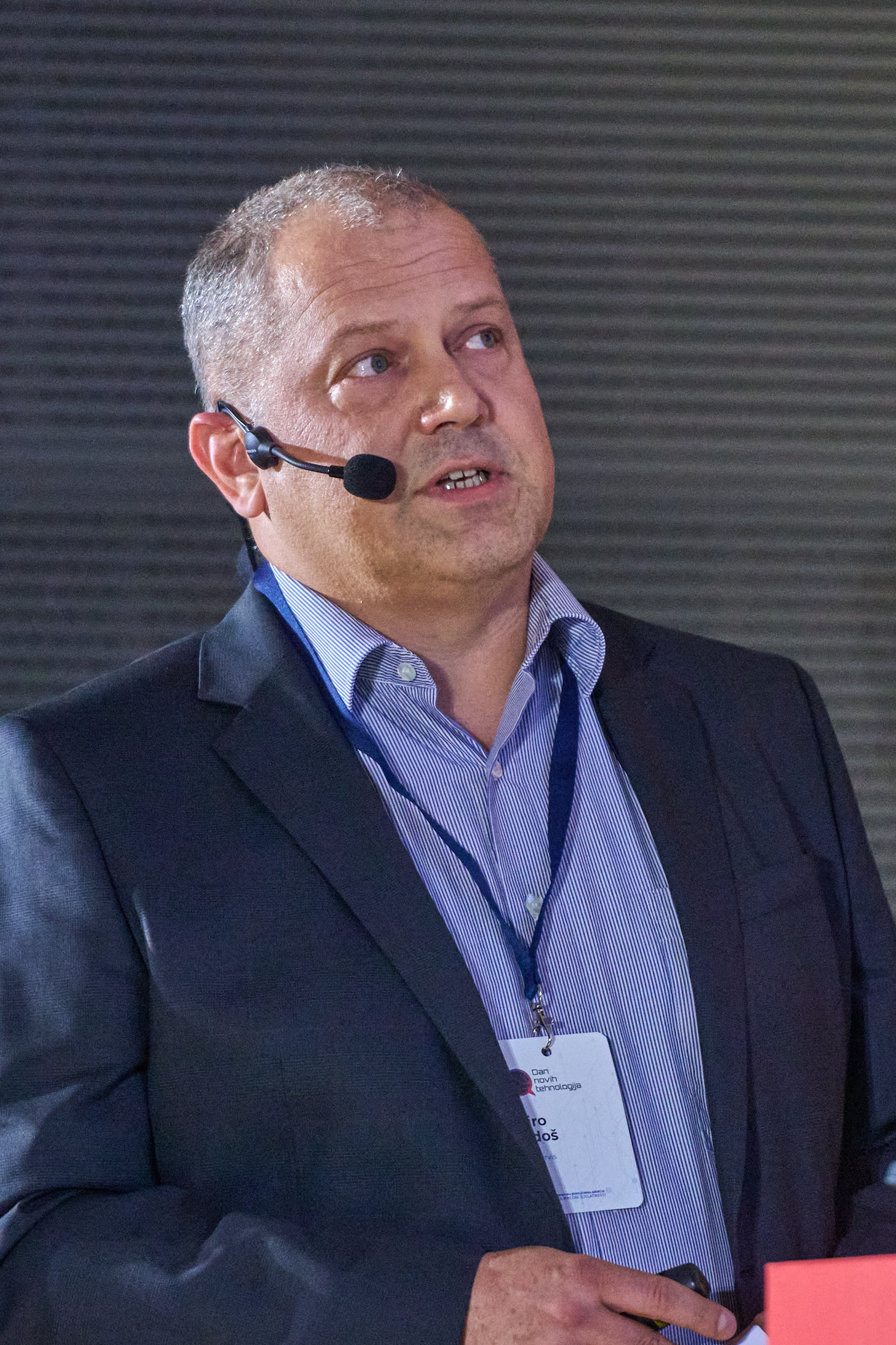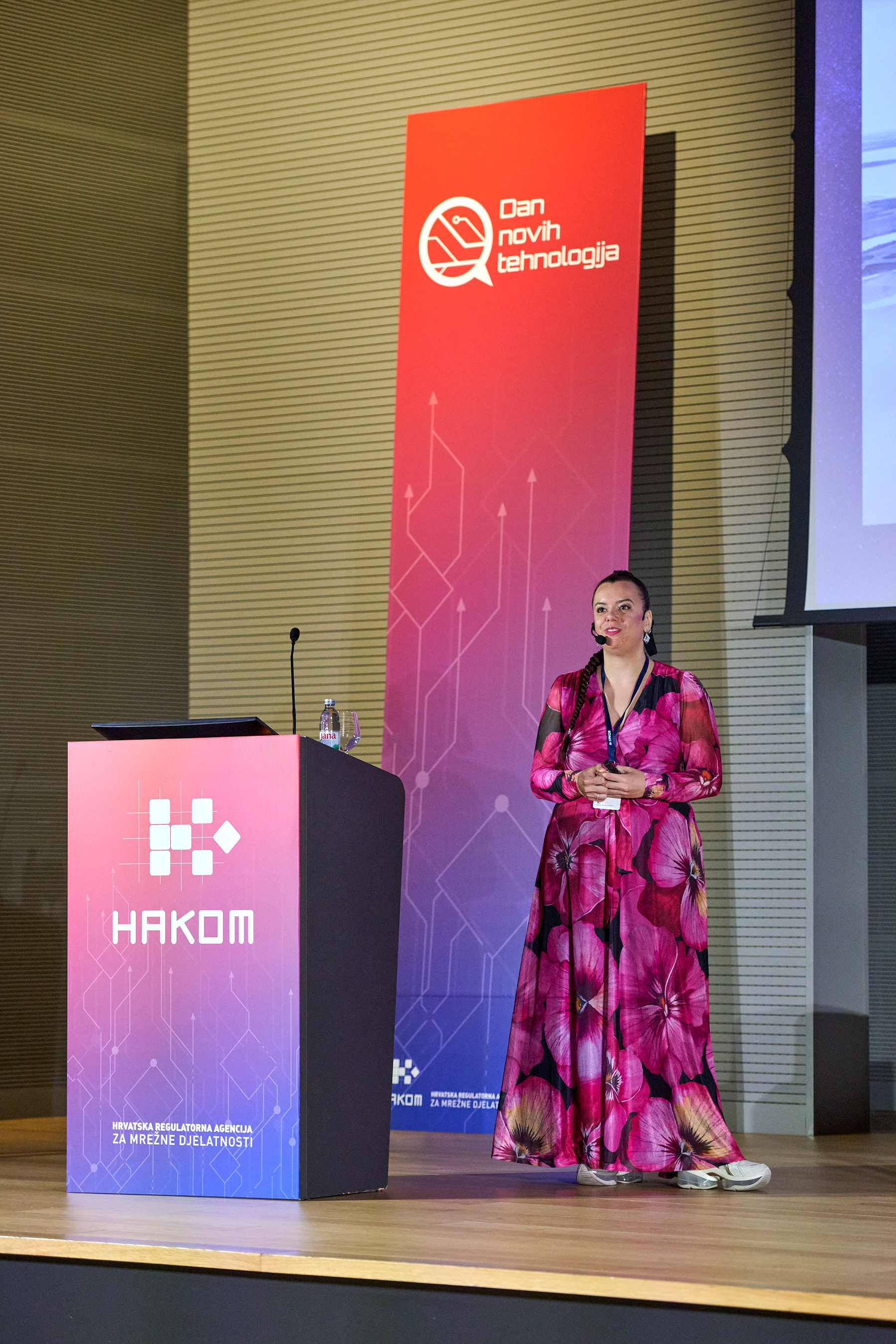HAKOM’s "Day of New Technologies" Conference was held
ZAGREB, May 15, 2024 - The Croatian Regulatory Authority for Network Industries (HAKOM) played host to the "Day of New Technologies" conference on Wednesday, May 15, bringing together numerous domestic and foreign experts in Zagreb. This year's conference topic was satellite communications, with a particular focus on Non-Terrestrial Networks (NTN). HAKOM also unveiled the results of assessments conducted this year on the quality of services provided by terrestrial public mobile communication networks in Croatia.
The contribution of space technologies to the global economy is growing
Given predictions that new generations of wireless communications, namely the further development of 5G and 6G networks, will break the boundaries of current terrestrial systems and achieve uninterrupted coverage (seamless connectivity) precisely through NTN networks, the conference aimed to highlight all the advantages of introducing satellite communication technologies and present a range of applications in various fields. NTN networks include GEO, MEO, and LEO satellite constellations, High Altitude Platform Systems (HAPS), Low Altitude Platform Systems (LAPS), and Air-to-Ground (A2G) networks. Satellite communications, or NTN networks, are currently being considered as a vital technology for achieving coverage of isolated areas in light of the development of 5G and 6G networks.
The conference was opened by Mislav Hebel, Deputy President of the HAKOM Council, who emphasized that the focus of the conference is on the growing impact of space technology on the global economy, which is currently estimated at $630 billion, with expectations that it will grow to an impressive $1.8 trillion by 2035. Such rapid progress also impacts other industries, from electronic communications, and transportation, as well as defense and national security.
"We are grateful to be able to bring together distinguished experts in this field to explore how the latest technological advancements can shape the future of our communication networks and services. This conference is not only an opportunity for the exchange of knowledge and ideas but also a platform to enhance collaboration in this area, with a particular emphasis on the accelerated growth of the space industry and potential opportunities for the Croatian economy," emphasized Hebel, adding that HAKOM will continue to provide regulatory support to enable the efficient utilization of new technologies for all users in Croatia.
The Gap between Terrestrial and Satellite Signals is Narrowing
At the conference, Miro Vidoš from ING servis d.o.o., a company specialized in satellite and wireless communications that has developed numerous satellite systems worldwide, spoke about the development of satellite communications. The company's main activities include antenna systems, satellite data links, satellite telephony, and wireless communications. ING servis operates on six continents in more than 30 countries. Reflecting on the company's history, Vidoš discussed the evolution of technologies used over the past 24 years, leading to the current systems in use and their applications worldwide.
"The future looks promising. Broadband access via satellite used to be possible at speeds of 15 Mbps, but today with LEO, we offer 150 Mbps and more. Mobility was once a specialized area with dedicated equipment, but today, LEO fixed terminals with flat panels have mobility at the heart of their design and can be used for both mobile and fixed applications. The Arctic and Antarctic regions are now much more accessible with a full range of services due to the emergence of LEO systems. The gap between terrestrial and satellite signals is narrowing, enabling direct competition, which is excellent for consumers. Great things are coming in the future," he emphasized optimistically in his presentation.
Tom Thorne from Kymeta discussed the development and use of flat panel antennas for LEO and GEO satellites, highlighting how Kymeta unlocks the potential of broadband satellite connectivity in combination with mobile networks to meet the enormous demand for communication on the move.
"Our flat panel antennas, electronically steered antennas, are based on the latest metamaterial research and have the lowest SWAP in the industry along with the best performance in tracking and tracking while on the move," emphasized Thorne. He presented numerous examples of their solutions, including those used by the military and emergency services of various countries.
CroCube- the beginning of space era in the Republic of Croatia
Daniela Jović from Spacemanic spoke about space entrepreneurship and Croatia's potentials in the field, emphasizing the opportunities provided by the space industry and the importance of satellites and satellite communications. The focus of the presentation was on the significance of participating in space initiatives to stimulate economic development. Once again, the CroCube mission was highlighted as the beginning of the space era in Croatia. It aims to stimulate technological development and the creation of an advanced society oriented towards prosperity and innovation. The project to design, program, and launch the first nanosatellite into orbit, driven by Croatian knowledge and advanced technologies, is also known as the "first Croatian cube in space" due to its distinctive shape and appearance; a small satellite shaped like a cube, with a total mass of around 1.1 kg. It will be equipped with a camera and a radio transmitter, and its mission is to photograph the Earth's surface from a height of 550 km. Croatia will be photographed three times a day during the mission, and during the mission, all interested parties will be able to follow the satellite's status and movement live on the mission's official website and capture a #Croselfie or radio signal as the satellite passes over Croatia. The planned launch is in the second half of this year, most likely in October.
"The space industry will at one point become the wealthiest industry, and we will need to find the technology to move forward and utilize the resources available in space," said Jović, adding that there are currently two types of space companies: those that send something into space and those that receive, utilizing existing infrastructure. "It is important for us to know what is happening not only in space but also on Earth," she emphasized, noting that at some point, every company will become space-oriented, and space is expecting a gold rush. It is already possible to be an entrepreneur in Croatia and tap into the available funds of the European Space Agency, with which a cooperation agreement for CroCube has recently been signed."
Marjan Patača, representing the Croatian company Amphinicy Technologies, a leading global software developer for firms operating within the satellite industry, delved into the development and application of software within this sector. With approximately 80 engineers on staff, the company has been delivering comprehensive support to satellite operators, equipment manufacturers, teleport operators, and multimedia and broadband service providers for over two decades. Their expertise lies in designing systems and developing tailored solutions. During the presentation, Patača showcased Monica, a cutting-edge software package designed for monitoring and management, offering a comprehensive solution built with the latest technologies. This software facilitates the monitoring and control of any system, whether it's a software module or physical equipment. Additionally, a contract was secured with the European Space Agency (ESA) for this project. Alongside Monica, Blink was introduced, a high-speed real-time data transmission software modem specifically designed to operate on commercial off-the-shelf servers, without customized hardware."
If the sky is the limit, then what about space?
During the conference, a virtual presentation was given by David Goldman, Vice President of Satellite Policy at SpaceX, who presented the development and latest achievements of Starlink. Starlink is the world's first and largest satellite constellation, utilizing low Earth orbit to deliver broadband internet that supports streaming, online gaming, video calls, and similar services via satellites to any part of the Earth.
By combining advanced satellites and user hardware with expertise in spacecraft operations and orbital activities, Starlink provides users worldwide with fast internet and low latency. Approximately 5900 satellites have been launched to date, and this number is expected to continue growing. Starlink owns more than 60 percent of satellites orbiting Earth and is a dominant player in the satellite internet market. Most satellite services come from individual geostationary satellites orbiting the planet at 35,786 km."
The conference concluded with a panel discussion on the topic "If the sky is the limit, what about space?" featuring Daniela Jović (CroCube), Miro Vidoš (ING servis), Tom Thorne (Kymeta), and Marjan Patača (Amphinicy Technologies).
The performance of Croatian mobile networks remains exceptionally high
In a special session, within the scope of the conference, Igor Bedeković from HAKOM presented the latest results of independent measurements of network and service quality provided by mobile operators in Croatia. The results included measurements of voice and data service performance collected in 31 cities and along five thousand kilometres of roads and highways in Croatia. The independent measurements were conducted using a consistent methodology for all operators, carried out by the Greek company Commsquare Hellas LTD. earlier this year. Detailed results for voice and data services were presented, along with additional measurements in the four largest Croatian cities. These measurement results indicate that Croatian mobile networks continue to perform exceptionally well. Operators have maintained their investments in development, enhancing transmission capacities and quality while simultaneously investing in new technologies.
The results from last year and this year are not directly comparable due to the utilization of different parameters and supplements. All tests were coordinated with the operators, who were familiar with the measurement methods; however, the time and location of the measurements were not disclosed to them. The company conducting the measurements emphasized that Croatian operators rank among the top 30% in the EU.
For more detailed information and measurement data, please refer to the provided link
A video recording of the entire conference, including all presentations, is available on the HAKOM YouTube channel.
For additional information please contact:
Croatian Regulatory Authority for Network Industries (HAKOM)
- Roberta Frangeša-Mihanovića 9 Street
- 10110 Zagreb, Croatia
- Tel. + 385 (0) 1 700 70 07
- Fax + 385 (0)1 700 70 70
Media inquiries can be submitted online using HAKOM’s official website: www.hakom.hr
About Hakom
HAKOM - Croatian Regulatory Authority for Network Industries – ensures preconditions for a fair market competition, stable growth and environment for innovations in the electronic communications and postal services market. HAKOM protects users’ interests and the possibility of choice among various communications and postal services at affordable prices, defines sustainable competitive conditions for operators and service providers under fair conditions for return on investment, and provides support to economic growth, public services and the quality of life in the Republic of Croatia by using modern technologies. HAKOM’ strategic goals are: to promote regulation of the electronic communications and postal services market, to support growth of investments and innovations in the electronic communications and postal services market, to provide efficient use of limited resources, to accelerate the growth of broadband products and services, to provide affordable offers of communications and postal services, to provide protection and informing of users, to build an efficient and comprehensive information system, to define and implement efficient processes, and to acquire multi-disciplinary expertise in market regulation.







